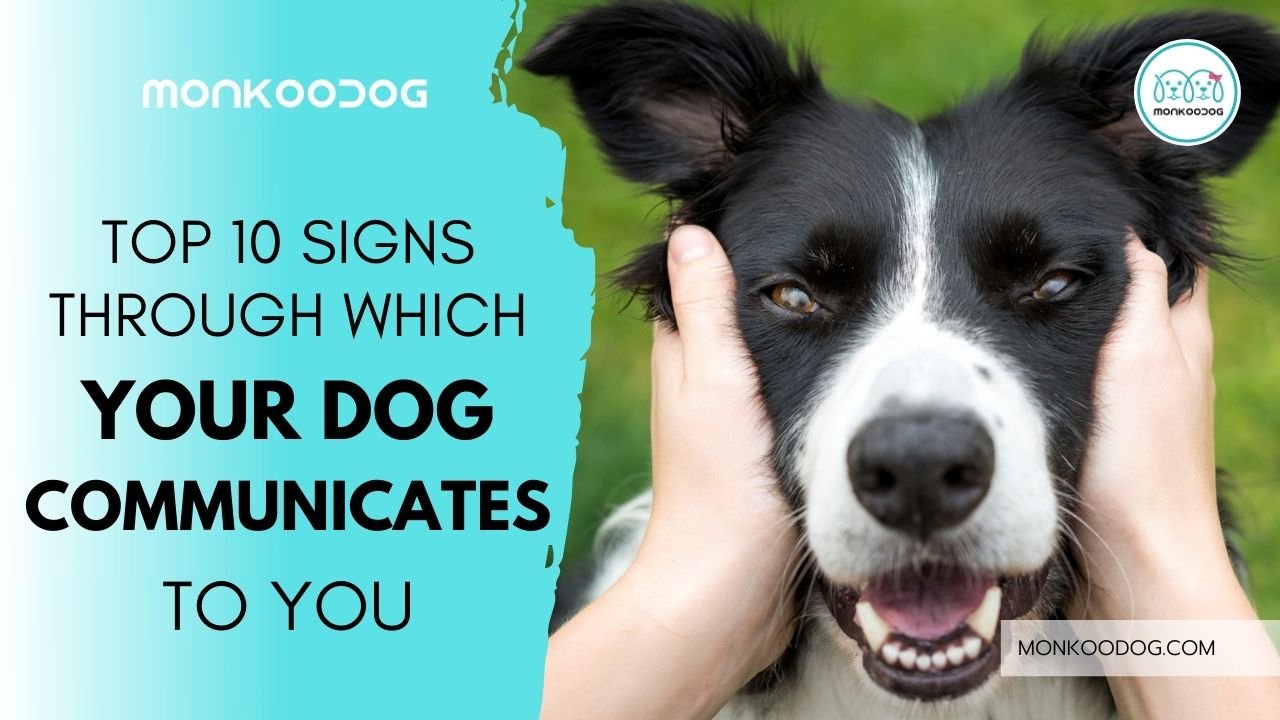Canines use facial and non-verbal communication to convey their emotions, much the same as people. However, since canines have four legs and a tail, their non-verbal communication is completely different from our own. In this blog we inform you about 10 Signs Through Which Your Dog Communicates To You.
Setting aside the effort to watch your dog’s developments and activities can be immensely helpful to you and your dog’s bliss, allowing you to perceive pressure or uneasiness, and react to likely issues before they deteriorate.
Dogs have an exceptionally evolved set of signs that they use to diminish the odds of animosity and strife with different canines, their dog parent, and other animals they might be living with.
These additionally mollifying signs are interesting with a portion of the more forceful canine non-verbal communication.
Are you looking for Affordable Pet Care Services in Delhi NCR, Then download Monkoodog PetCare App.
Here are 10 signs through which dogs communicate with humans:
1. Eye Contact
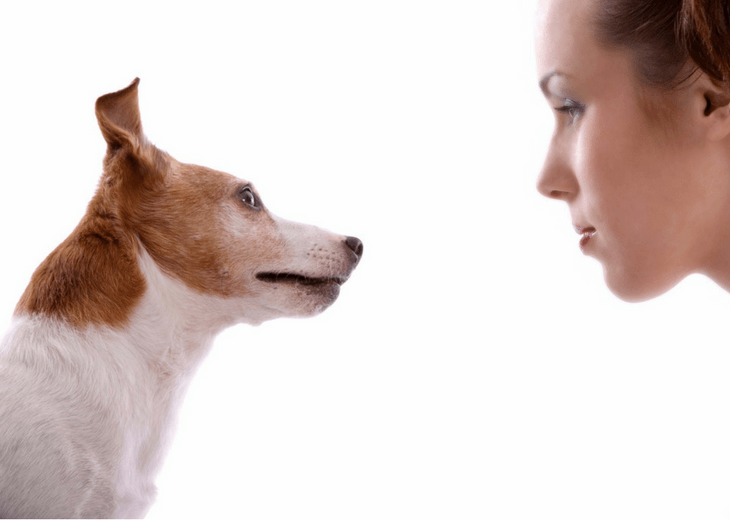
How does it feel when someone keeps staring at you? Uncomfortable right, that is exactly how dogs feel when someone stares at them constantly. In fact, when your dog looks away while someone is staring at them, it is their way of avoiding confrontation and showing discomfort.
Looking away, or not maintaining eye contact with you when you keep staring at them, is their polite way of telling you that they don’t want to fight, as your constant staring sends them a signal of invitation to a fight from your side. Avoid staring at them constantly as it makes them really uncomfortable.
Also See: Why Dogs Eat Grass — And How To Prevent It
2. Wiggling tail
We have all witnessed the never stopping wiggling of the tail of our dogs (and we absolutely love it) when we come back home, we could have been gone for merely a few minutes but enthusiasm in that wiggling tail tells another story. So what does your dog want to convey with his tail?
Your dog can convey numerous feelings with his tail. A swaying tail and wiggly butt mean unadulterated euphoria. A gradually swaying tail implies a mindful nature whereas a solid tail held high is an indication of readiness, and a low tail is an indication of substance. A tucked tail implies they are frightened.
3. Ear position
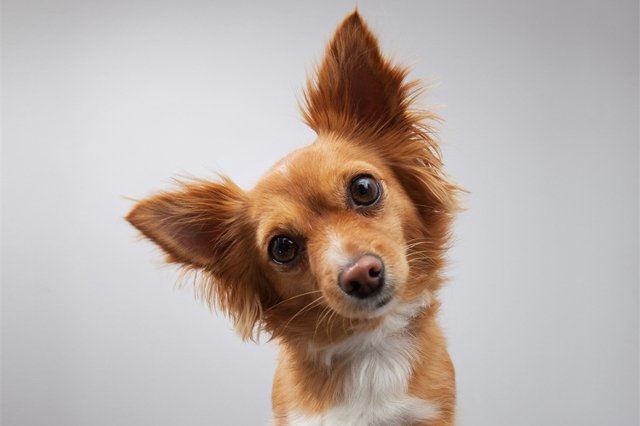
While we’re not able to do much with our own ears, a canine’s ears can be inconceivably expressive.
If your dog’s ears are pricked, advanced, or straight up, it means they are completely occupied with playing, chasing, or focusing.
This ear position can likewise demonstrate interest and can communicate the purpose to accomplish something. It is a conspicuous ear position in the beginning phase of a chase.
Whereas Ears that are forward yet near the head can likewise show aggression. When your dog’s ear part is back yet not smoothed, they might be feeling despondency, nervousness, or vulnerability.
Also See: 6 Benefits Of Feeding Your Pup With All-Natural Dog Food
4. Eye Signal
Your dog’s eyes express as much as your eyes do, and similarly, as you figure out how to decipher individuals’ eye signals, you can likewise figure out how to decipher your dog’s.
When your dog’s eyes are entirely open it implies that your canine is feeling lively and is ready or focused.
When your dog stares, they mean to show dominance or confrontational behaviour.
Whereas when your dog blinks or winks it means that he is being perky. The narrowed eyes of your dog can show that the dog is feeling forceful and is planning to attack. This signal might be joined by staring.
5. Smiling
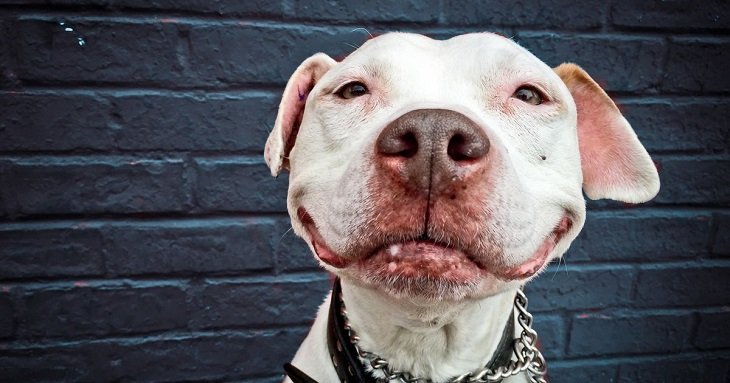
In all honesty, your dog can smile. While it tends to be hard to separate a grin from a snarl, checking other non-verbal communication for indications of play or animosity can assist you with deciding if your dog is cheerful or feeling forceful.
On the off chance that all that else amounts to a glad dog, at that point, your canine is grinning, and this implies that your dog is cheerful and relaxed.
6. Yawning
The significance of a canine’s yawning is reliant on the circumstance, similarly, all things considered, we yawn since we’re drained, need more oxygen, we’re feeling pushed or humiliated, or we notice another person yawning.
For canines, yawning gives off an impression of being contagious very much like in the case of humans. Indeed, in the event that you yawn in front of your dog, he might decipher it either as you are under some kind of stress (in which case, he will probably get some distance from you to give you some space), or will react alike and yawn too.
Dogs additionally yawn as an approach to ease the pressure, to show disarray, or when they feel marginally undermined particularly when meeting new circumstances or new canines or another animal.
Also See: Everything You Need To Know About Dog Tear Stains
7. Lip licking
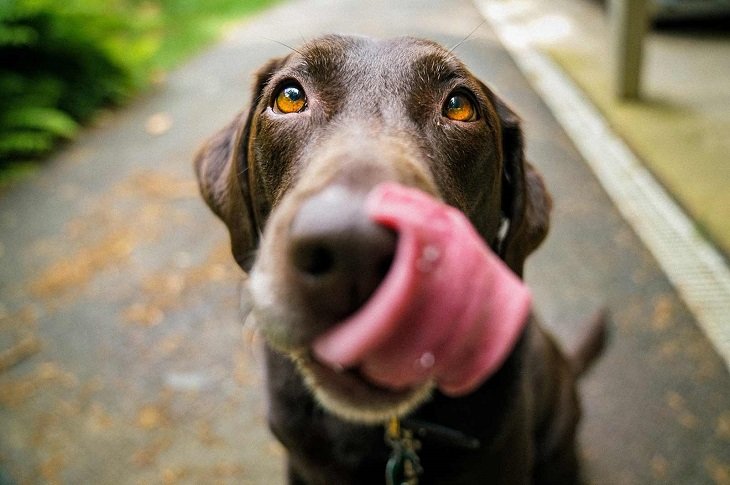
If your canine licks its lips in a blend with a yawn, this can be an unmistakable sign that he is under tension, or confronted. It’s a typical motion appeared by young doggies around grown-ups, however, the conduct ought not to proceed into adulthood.
In developed dogs, licking can likewise be important for the dog’s sexual conduct as it discovers compound signs on grass, cover, and the private parts of other dogs. A dog licking another dog’s lips is demonstrating conceding conduct.
8. Bared teeth
If your dog’s lips are twisted out and his teeth are uncovered, it means that he is flagging animosity and a goal to utilize the teeth for gnawing. This doesn’t imply that each blaze of teeth implies hostility.
In the event that the teeth are uncovered and there is no wrinkling of the gag, this is an admonition and an indication of strength and regional protectiveness.
9. Barking
Your dog barks for various reasons, and listening to them can assist you with figuring out how to separate your dog’s particular barks in various circumstances. A boisterous, shrill, or fast bark from your dog can be either forceful or territorial.
Whereas a short, incessant throaty alarm bark is pointed toward alerting the pack (dogs or humans) of expected risk. It very well might be joined by growling.
Whereas an abrupt piercing, sharp cry might be a sign that your dog is in torment and a low-pitched, single, or scattered bark is another admonition to ease off.
Also See: Benefits Of Children Growing Up With Dogs
10. Howling
It is important to comprehend why your dog howls. Knowing the various reasons behind your dog crying can assist you in reacting to his/her necessities. There are a few types of wailing that have various implications.
Continued howling shows partition or forlornness. In the event that your dog was isolated from different canines to join your home, he/she may wail from the outset. Keeping his/her near you can support him/her vibe less desolate.
A short cry with a rising pitch for the most part flags that your canine is glad as well as energized.
An alarm howl is a reaction to another cry or a supported clamor. You may see that your dog wails in light of alarms passing by your home. In the event that your dog yells around evening time, he might be crying because of another canine wailing that is out of the scope of human hearing.

